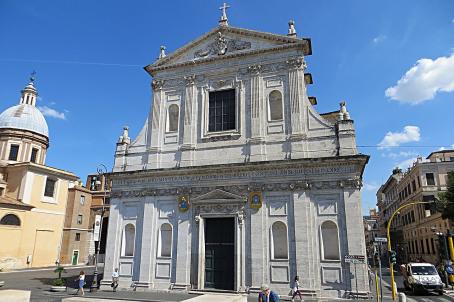Chiesa di Santa Maria del Divino Amore

The church of Santa Maria del Divino Amore dates back to 1729 when a pre-existing medieval church was completely rebuilt to a design by Filippo Raguzzini. In 1802, Pius VII entrusted it to the Confraternity of Divine Love, which has its headquarters there and from which the street and the church take their names. Only the bell tower, which dates from the 12th century, remains of the medieval church. The interior of the church has a single nave with a barrel vault, decorated with frescoes in the 19th century.





